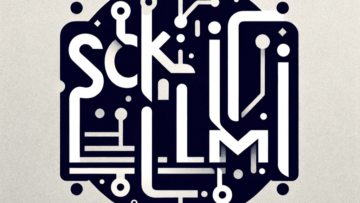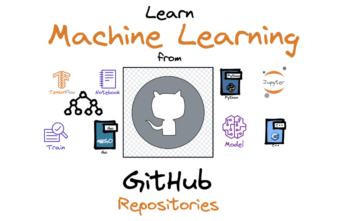
Image from Bing Image Creator
ChatGPT has taken the world by storm, and people are increasingly curious about how to use it to become more productive or improve their lives and work. Many debates have already occurred about whether ChatGPT is a valuable and reliable educational resource. The answer is not as straightforward as it might seem. Let’s take a closer look.
ChatGPT provides fast answers to inputs, but they’re not necessarily trustworthy. For example, it can give wholly or partially false information that seems very believable. People in the artificial intelligence research world deem this problem “hallucinations.”
Anyone who’s ever taught a class or been a student has almost certainly encountered people who confidently make grossly wrong statements, conveying them as absolute facts. ChatGPT does the same thing when it hallucinates, which is particularly problematic for anyone using the tool to learn or complete educational projects.
What amazes people most about ChatGPT is how fast it can give replies. When a student is under pressure to write a paper and feels like they’ve hit a mental wall, it’s easy to see how they could feel tempted to do more than use ChatGPT as a resource and directly copy from it instead.
This has made college and high school educators consider redefining plagiarism to include forbidding the copying of artificial intelligence-provided material. Teachers that suspect plagiarism can’t determine how a student got the content that potentially allowed them to copy from ChatGPT.
That’s because no one can ask ChatGPT how it generated specific answers. People have also discovered that the tool often generates fake citations when users ask for its resources.
Many people bring up their favorite teachers when asked what motivated them to pursue specific careers. Getting inspiration from an early age is important, especially since there’s still a gender imbalance in several professions. Fortunately, that’s starting to improve. At the Russian School of Mathematics — which serves 50,000 students across North America — 78% of teachers and 48% of students are female.
However, evidence suggests that even if people use ChatGPT for reasons unrelated to their careers or education, the tool could still parrot harmful stereotypes to them. One user asked ChatGPT to tell a story about a boy and a girl choosing their careers. The girl in the tale doubted she could “handle all the technicalities and numbers in the engineering program,” but the boy loved working with machines and gadgets.
Granted, a ChatGPT conversation would not be the deciding factor that makes someone choose a career path or course. However, there’s already enough negative feedback in the world without a chatbot adding to it and expressing outdated gender generalizations.
Many teachers have realized there’s no going back to the time before ChatGPT. Now, the challenge is to figure out how learners might use the tool as a supplemental aid rather than expecting it to give them all the right answers.
Students could use the tool as a brainstorming engine, asking questions such as “What are the top five cybersecurity risks for businesses?” and then begin outlining their papers based on ChatGPT’s response. That doesn’t encourage people to cheat, but it opens their minds about things to cover they may have initially overlooked.
Another possibility is to generate writing prompts with ChatGPT. That’s a simple but effective way to keep skills sharp and reduce delays when people need to produce content but aren’t sure how to start.
One teacher also said they use it to help students plan generic experiments. It can also assist educators with administrative tasks — such as writing letters to parents and creating syllabi — thereby giving them more time to devote to teaching.
These examples show that ChatGPT has some valid use cases. However, there are very concerning examples of how people could misuse or get led astray by the tool. Users must keep these realities in mind whether they’re teachers, educators or just interested in artificial intelligence.
April Miller is managing editor of consumer technology at ReHack Magazine. She have a track record of creating quality content that drives traffic to the publications I work with.
- SEO Powered Content & PR Distribution. Get Amplified Today.
- PlatoAiStream. Web3 Data Intelligence. Knowledge Amplified. Access Here.
- Minting the Future w Adryenn Ashley. Access Here.
- Buy and Sell Shares in PRE-IPO Companies with PREIPO®. Access Here.
- Source: https://www.kdnuggets.com/2023/05/chatgpt-trusted-educational-resource.html?utm_source=rss&utm_medium=rss&utm_campaign=can-chatgpt-be-trusted-as-an-educational-resource
- :has
- :is
- :not
- $UP
- 000
- 50
- a
- About
- Absolute
- across
- adding
- administrative
- age
- Aid
- All
- already
- also
- america
- an
- and
- answer
- answers
- anyone
- ARE
- artificial
- artificial intelligence
- AS
- assist
- At
- based
- BE
- because
- become
- been
- before
- begin
- Berkeley
- Bing
- bring
- businesses
- but
- by
- CAN
- Career
- careers
- cases
- certainly
- challenge
- chatbot
- ChatGPT
- Choose
- choosing
- class
- closer
- College
- complete
- confidently
- Consider
- consumer
- consumer technology
- content
- Conversation
- copying
- could
- course
- cover
- Creating
- curious
- Cybersecurity
- debates
- Deciding
- delays
- Determine
- directly
- discovered
- do
- does
- Doesn’t
- Duke
- Early
- easy
- editor
- Education
- educational
- educators
- Effective
- encourage
- Engine
- Engineering
- enough
- especially
- Ether (ETH)
- Even
- EVER
- evidence
- example
- examples
- expecting
- experiments
- expressing
- factor
- facts
- fake
- false
- FAST
- Favorite
- feedback
- feel
- female
- Figure
- For
- Fortunately
- from
- Gadgets
- Gender
- generate
- generated
- generates
- get
- getting
- Girl
- Give
- Giving
- going
- harmful
- Have
- help
- High
- Hit
- How
- How To
- However
- HTML
- HTTPS
- i
- if
- image
- imbalance
- important
- improve
- in
- increasingly
- initially
- inputs
- Inspiration
- instead
- Intelligence
- interested
- IT
- ITS
- just
- KDnuggets
- Keep
- LEARN
- Led
- Library
- like
- Lives
- Look
- loved
- Machines
- made
- magazine
- make
- MAKES
- managing
- many
- material
- mathematics
- May..
- mental
- might
- mind
- minds
- more
- most
- motivated
- must
- Nature
- necessarily
- Need
- negative
- no
- North
- north america
- now
- numbers
- occurred
- of
- often
- on
- ONE
- opens
- or
- out
- Paper
- papers
- parents
- particularly
- path
- People
- plato
- Plato Data Intelligence
- PlatoData
- possibility
- potentially
- pressure
- Problem
- produce
- productive
- Program
- projects
- provides
- publications
- quality
- Questions
- rather
- realities
- reasons
- record
- reduce
- reliable
- research
- resource
- Resources
- response
- right
- risks
- russian
- Said
- same
- School
- see
- seem
- seems
- serves
- several
- sharp
- she
- show
- Simple
- since
- skills
- some
- Someone
- specific
- start
- Starting
- statements
- Still
- Storm
- Story
- straightforward
- Student
- Students
- such
- Suggests
- sure
- Take
- tasks
- teacher
- teachers
- Teaching
- Technology
- tell
- than
- that
- The
- the world
- their
- Them
- then
- There.
- thereby
- These
- they
- thing
- things
- this
- time
- to
- tool
- top
- track
- traffic
- trusted
- trustworthy
- under
- use
- User
- users
- using
- Valuable
- very
- Wall
- Way..
- What
- when
- whether
- which
- WHO
- wholly
- with
- without
- Work
- working
- world
- would
- write
- writing
- Wrong
- zephyrnet







